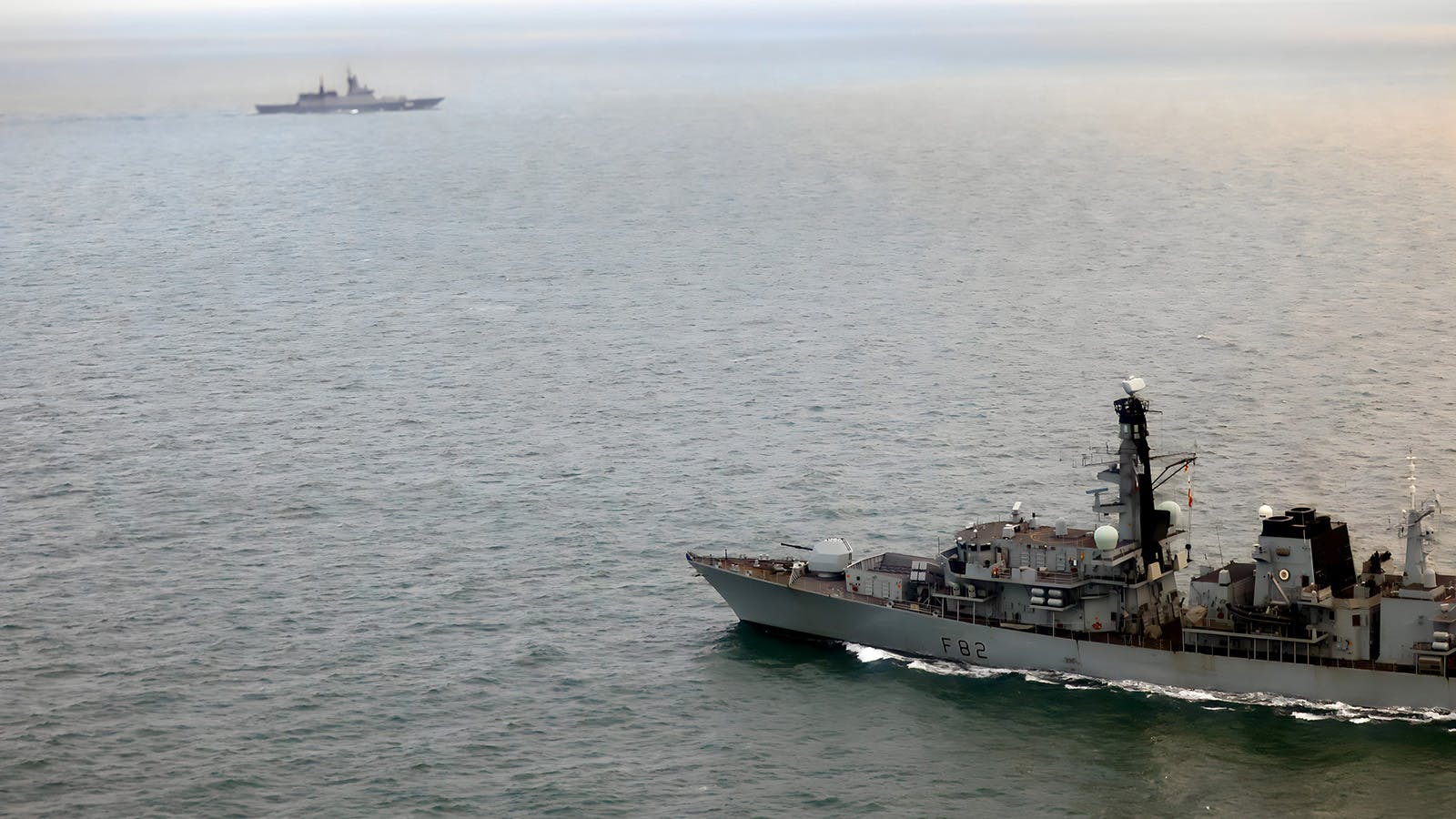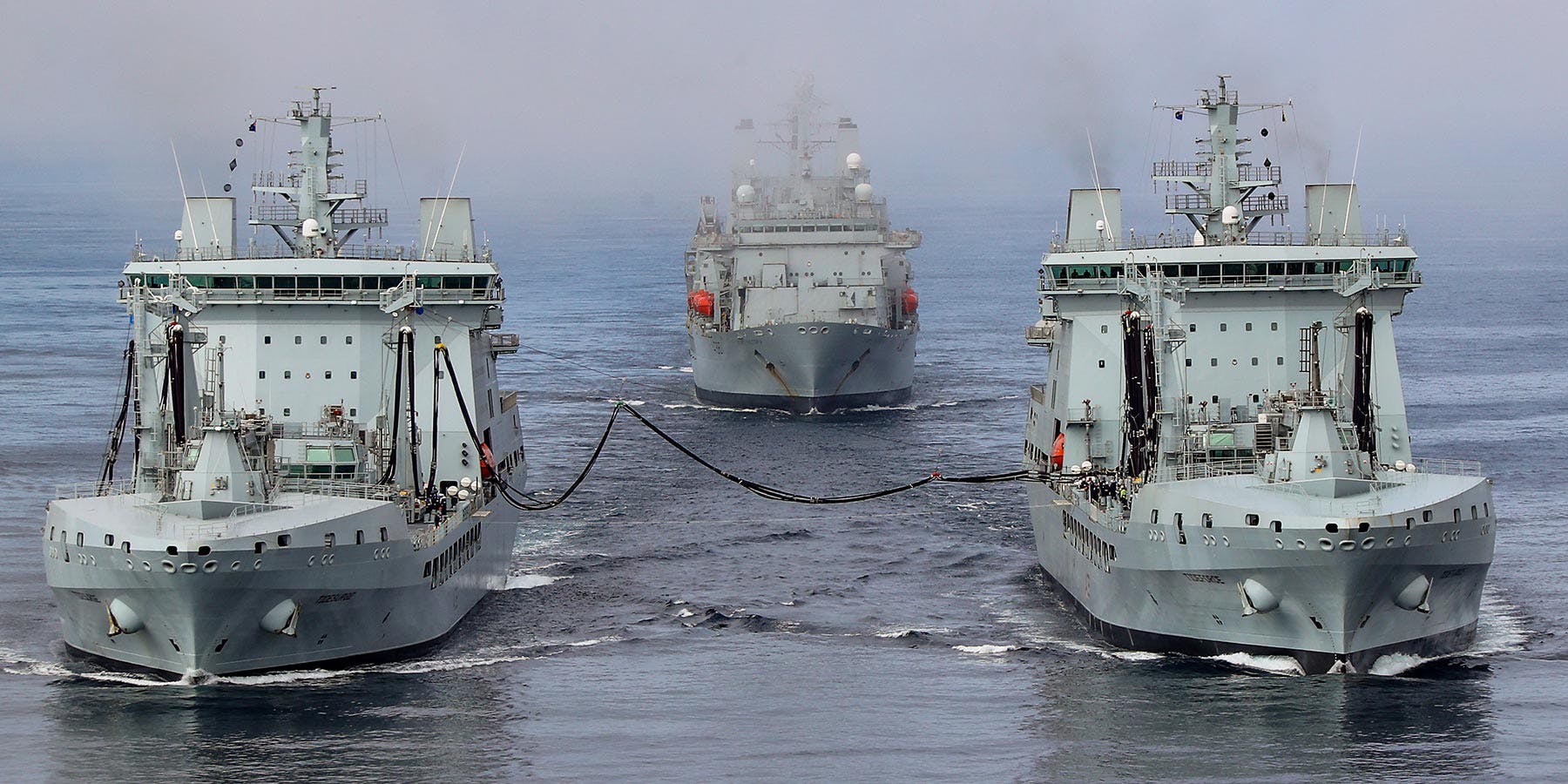HMS Somerset and RFA Tidesurge recently conducted a replenishment at sea (RAS), a vital effort ensuring the Royal Navy’s ability to sustain its operations without returning to port.
This routine event highlights the crucial role of support ships in maintaining the fleet’s readiness and endurance.
#HMSSomerset found another fine weather window to conduct Replenishment At Sea activities with RFA Tidesurge.#F82 #RFATidesurge #RAS pic.twitter.com/YHYnZgenwx
— HMS Somerset (@HMSSomerset) January 13, 2025
Replenishment at sea involves transferring supplies such as fuel, food, and other essentials from a support vessel to a warship while both remain underway. This complex operation requires precise coordination an enabling naval vessels to remain on station for extended periods.

HMS Somerset, a Type 23 Duke-class frigate, is a versatile warship designed for anti-submarine warfare but capable of performing a variety of missions. Equipped with advanced sonar systems, surface-to-air missiles, and the Merlin helicopter, Somerset protects the fleet from underwater and aerial threats. It is a key asset in patrol, escort, and humanitarian missions, with its crew playing a critical role in RAS operations.
RFA Tidesurge, a Tide-class tanker operated by the Royal Fleet Auxiliary, is built to deliver fuel, fresh water, and supplies to Royal Navy vessels at sea. With a capacity of over 19,000 tonnes of fuel and advanced replenishment systems, Tidesurge can refuel multiple ships simultaneously.
While incredibly routine, the replenishment at sea between HMS Somerset and RFA Tidesurge exemplifies the importance of logistical support at sea. RAS ensures that Royal Navy vessels can maintain strategic reach and readiness, enabling them to patrol vital maritime routes, support NATO missions, and respond to global crises effectively without having to dock to fill up the tanks.















Good to see Somerset with her NSM fit out, but god does she look old.
Does anyone know what kit is to be removed from the T23s and put on to the T26, if any. If it is none then is there any kit on the T23s that can be used say on the T31s/T32s if they go ahead. I am thinking about sonar and radar suites as it to me looks like the T26s will get everything new.
Would be unlikely to go to the T-26s due to their dedicated strike length MK-41 cells. The older digital mock ups of the T-31 used to depict them with 8 canister launched NSM just in front of the original 12-24 cell GWS-35s they were intended to be fitted with – it’s likely due to the number of NSM sets bought the plan was 5 for T-31 in that configuration and 6 for the T-45s. With the T-31 now to be fitted with MK-41 cells as well nobody is sure whether they’ll receive NSMs; off of my personal speculation if the ships receive 16 cells it maybe likely they’ll supplemented this with the canister launched missiles, if they receive the maximum 32 cells they possibly won’t due to the heightened magazine depth – it hasn’t been confirmed how many MK-41 cells the frigates will receive yet, the maximum is 4 blocks for 32 however, it’s just as likely they’ll receive less for budgetary reasons.
I can see them prioritizing T-45 fit before T-31s, if they are to receive them, to stem the heavy criticism of that class and to make it a shallow headline for government PR to look good to the general public and appear as though they are taking defense seriously whilst keeping investment minimal
The Type 26 will use the Artisan Radar System,Type 2150 Bow Sonar,Type 2087 TAS and the 30mm DS30M Gun mounts,in most cases carried over from the Type 23’s to name the obvious ones.
I thought the towed 2087 sonar was being transfer from the type 23 to the type 26 but don’t quote me?
I would urge anybody who has never took part in a RAS to look at the sea state ahead of the vessels. My estimate is sea state 2.
Yet between the vessels it is probably 4 /5. In my view the best possible weather for a RAS. When the sea conditions are less favourable that space between the vessels becomes a veritable cauldron. That’s why the RFA need to be paid fairly. It’s not for the faint hearted, like say a politician.